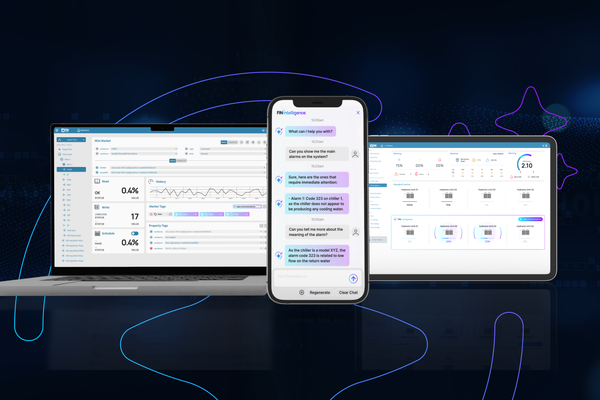Protecting the privacy of remote workers
Jeremy Swinfen Green explains why privacy protection for remote and hybrid workers is a crucial issue for employers, and how organisations can best approach it

Remote work has become an integral part of modern business operations, offering employees greater flexibility and giving organisations access to a broader, even international, talent pool.
However, this opportunity presents challenges, especially in employee privacy. While businesses must encourage productivity and ensure data security, they also have a legal and ethical duty to respect the privacy rights of their remote and hybrid workers.
Unlike traditional office environments, where security and monitoring are naturally built into the workplace structure, remote work introduces complexities that demand careful consideration.
Blurring the personal and professional
One of the primary reasons why companies must take special care with employee privacy in remote work is the blurring of personal and professional spaces.
In an office setting, work takes place in a controlled environment, with clear distinctions between professional and personal life. Employees may be prevented from using certain websites such as social media or shopping sites, or limited to access at particular times. And they work within a secure IT network environment which may well be able to identify possible instances of fraud, phishing or the accidental sharing of confidential information. This maintains productivity while reducing the likelihood of commercial data being unintentionally exposed.
At home, however, employees mix personal activities with their professional responsibilities, often within short time frames. They may be switching from corporate social media accounts to personal social media accounts or between professional and personal online information or services.
Employers must, of course, manage any security risks to their confidential data or to the personal data of other employees and clients that arise from home working. However, they must also be cautious about home-working policies that may place an unfair burden on employees. At the same time, they must take great care if they wish to use technologies that could intrude into employees’ private lives, such as monitoring software that has the potential to capture personal data or information about activities unrelated to work.
Personal devices
A key consideration is the increased reliance of home workers on personal devices and home networks. They are likely to be using a home IT network which lacks enterprise-level security measures. They may be using a personal copy of software like the MS Office suite, which may be out of date and insecure, or even pirated – putting their employer at risk of breaching copyright. And in many cases, they will be working on a personal laptop, tablet or smartphone which may be shared with other family members.
Organisations must therefore ensure that employees are equipped with the necessary software, hardware and security tools. Legal editions of software and security tools such as VPNs, anti-virus and encryption software will be essential. Even where these will benefit the employee’s personal privacy, they should be paid for by the employer, not least because this will help them ensure that the tools are being used.
Monitoring employees at home
How employees are monitored is also a critical issue that separates remote work from office-based work.
In traditional offices and other workplaces, companies often use identity badges, security cameras and other forms of passive monitoring that do not greatly intrude on personal privacy. And when they are online, there is (or should be) an expectation that at least some monitoring of online activity could happen – although this should be proportionate: unwarranted surveillance that does not comply with the UK’s GDPR is unlawful.
In contrast, people do not expect their employer to check up on them while they are working from home. Despite this, some organisations use digital monitoring tools to ensure productivity when employees are working away from the office. This can include software that tracks keystrokes, takes occasional screenshots or even requires continuous webcam access.
While these measures might seem like a way to ensure good productivity, they are very likely to foster resentment and create a culture of distrust. Employers should therefore strike a balance between maintaining oversight and respecting the privacy of home workers, ensuring that any monitoring is transparent and only occurs when the employer is working on company business.
Preventing data breaches
Data breaches present a significant risk in remote work environments. In an office, strict controls ensure that commercially confidential information is accessed and shared securely. However, when working remotely, employees may unintentionally expose confidential data even if the hardware and software they are using are cyber-secure. Data can be leaked by employees working on shared devices or in shared spaces, where screens or printouts may be visible to other, unauthorised people.
Remote workers may also use unsecured communication channels such as unencrypted emails, messaging apps without end-to-end encryption, public Wi-Fi networks and file-sharing platforms that do not enforce access controls.
The key to preventing these risks is generally education – an explanation of why the dangers exist and what the remote worker can do to avoid them.
Virtual meetings are another source of danger. Remote workers should be required to use secure, company-approved video conferencing platforms that offer encryption and access controls. These should be password-protected with features such as authentication to prevent unauthorised attendees from joining. Where possible, organisations should also mandate the use of end-to-end encrypted communication tools to prevent data interception. The recording of meetings by third parties should be avoided, and access to recorded sessions should be tightly controlled to prevent unauthorised viewing or distribution.
In addition, employees should be required to use headphones to limit the chance of conversations being overheard. They must also be made aware of eavesdroppers when talking to others about their work in public environments such as cafes and train carriages.
Screen sharing is an additional area for caution. Workers should ensure that only relevant documents are visible when they share their screen. Notifications from emails or messaging apps should be turned off to prevent unintended exposure of confidential information.
Maintaining work-life boundaries
Another challenge posed by remote work is the erosion of work-life boundaries. Some employees are expected to be available outside traditional working hours, as digital communication tools make it easy for their employers to remain constantly connected to them.
While flexibility is one of the benefits of remote work, it should not come at the cost of wellbeing. Employers must accept workers’ right to disconnect. Clear guidelines about expected availability should be agreed. Excessive work demands can lead to stress and disengagement, affecting productivity and retention rates. While the UK’s Labour government’s “right to switch off” policy has been abandoned, good employers will already be following its fundamental principle of not requiring employees to respond to emails, voicemails or text messages outside their normal working hours.
Privacy vs productivity
Companies must protect employee privacy while maintaining operational efficiency. A clear privacy policy that has been discussed with workers is crucial. This should outline what data is collected when employees are working remotely, how it is used and what measures are taken to protect it. Employers should tell workers about any monitoring that happens, and ideally gain their consent. They must always make sure they are compliant with legal requirements.
By building a culture of trust and accountability, businesses can create a remote work environment that supports both organisational goals and individual privacy rights.

Jeremy Swinfen-Green
Related Articles
Most Viewed
Winston House, 3rd Floor, Units 306-309, 2-4 Dollis Park, London, N3 1HF
23-29 Hendon Lane, London, N3 1RT
020 8349 4363
© 2025, Lyonsdown Limited. Business Reporter® is a registered trademark of Lyonsdown Ltd. VAT registration number: 830519543





